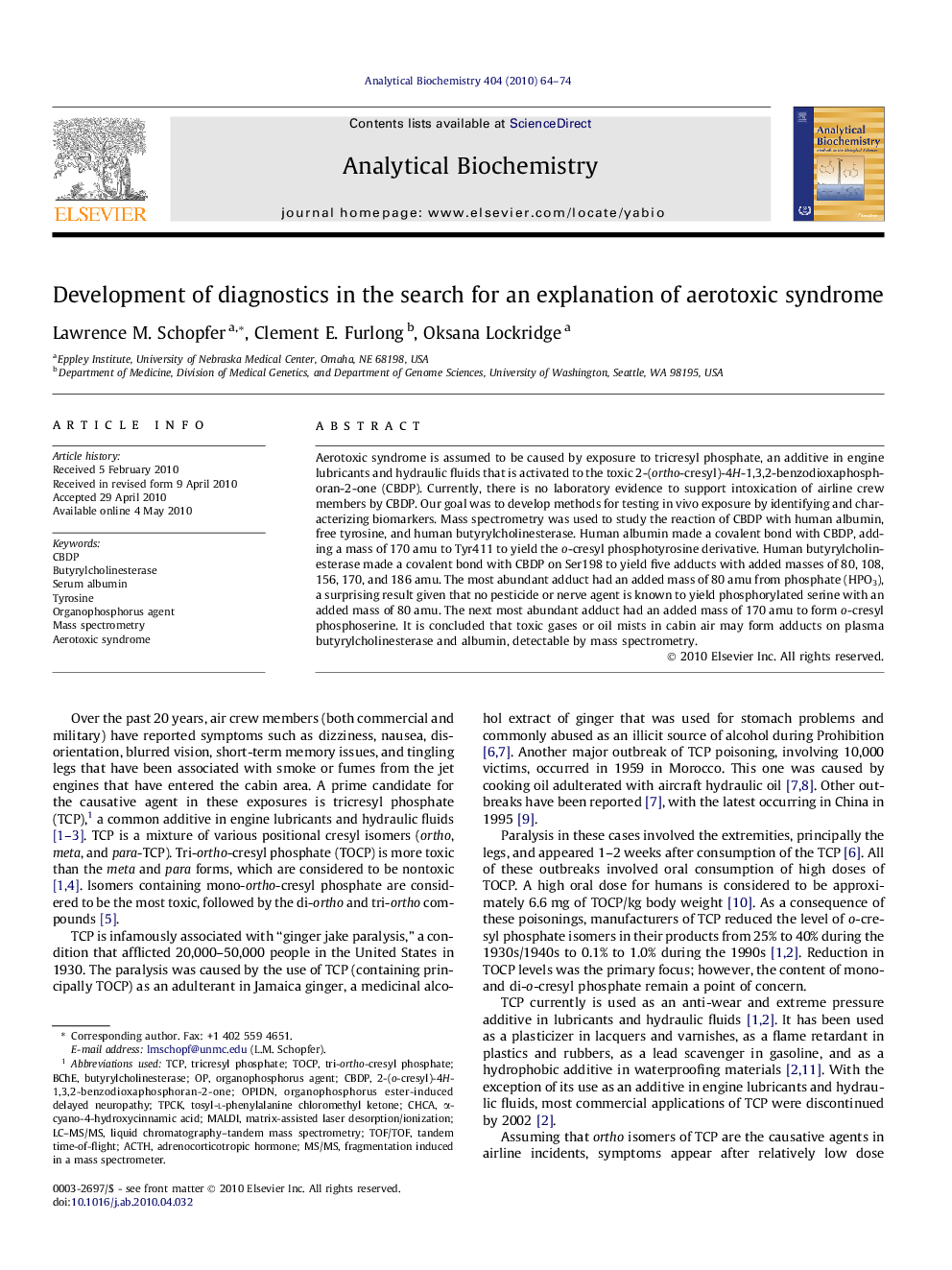| Article ID | Journal | Published Year | Pages | File Type |
|---|---|---|---|---|
| 1176974 | Analytical Biochemistry | 2010 | 11 Pages |
Aerotoxic syndrome is assumed to be caused by exposure to tricresyl phosphate, an additive in engine lubricants and hydraulic fluids that is activated to the toxic 2-(ortho-cresyl)-4H-1,3,2-benzodioxaphosphoran-2-one (CBDP). Currently, there is no laboratory evidence to support intoxication of airline crew members by CBDP. Our goal was to develop methods for testing in vivo exposure by identifying and characterizing biomarkers. Mass spectrometry was used to study the reaction of CBDP with human albumin, free tyrosine, and human butyrylcholinesterase. Human albumin made a covalent bond with CBDP, adding a mass of 170 amu to Tyr411 to yield the o-cresyl phosphotyrosine derivative. Human butyrylcholinesterase made a covalent bond with CBDP on Ser198 to yield five adducts with added masses of 80, 108, 156, 170, and 186 amu. The most abundant adduct had an added mass of 80 amu from phosphate (HPO3), a surprising result given that no pesticide or nerve agent is known to yield phosphorylated serine with an added mass of 80 amu. The next most abundant adduct had an added mass of 170 amu to form o-cresyl phosphoserine. It is concluded that toxic gases or oil mists in cabin air may form adducts on plasma butyrylcholinesterase and albumin, detectable by mass spectrometry.
